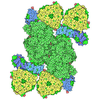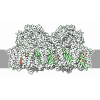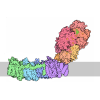+ Open data
Open data
- Basic information
Basic information
| Entry | Database: PDB / ID: 8xls | ||||||
|---|---|---|---|---|---|---|---|
| Title | PSI-FCPI of the diatom Thalassiosira pseudonana CCMP1335 | ||||||
 Components Components |
| ||||||
 Keywords Keywords | PHOTOSYNTHESIS / Photosystem I / ELECTRON TRANSPORT | ||||||
| Function / homology |  Function and homology information Function and homology informationlight-harvesting complex / photosynthesis, light harvesting in photosystem I / photosynthesis, light harvesting / photosystem I reaction center / photosystem I / photosynthetic electron transport in photosystem I / photosystem I / photosystem II / chlorophyll binding / chloroplast thylakoid membrane ...light-harvesting complex / photosynthesis, light harvesting in photosystem I / photosynthesis, light harvesting / photosystem I reaction center / photosystem I / photosynthetic electron transport in photosystem I / photosystem I / photosystem II / chlorophyll binding / chloroplast thylakoid membrane / response to light stimulus / photosynthesis / chloroplast / 4 iron, 4 sulfur cluster binding / oxidoreductase activity / electron transfer activity / magnesium ion binding / metal ion binding / membrane Similarity search - Function | ||||||
| Biological species |  Thalassiosira pseudonana CCMP1335 (Diatom) Thalassiosira pseudonana CCMP1335 (Diatom) | ||||||
| Method | ELECTRON MICROSCOPY / single particle reconstruction / cryo EM / Resolution: 2.3 Å | ||||||
 Authors Authors | Kato, K. / Nakajima, Y. / Shen, J.R. / Nagao, R. | ||||||
| Funding support | 1items
| ||||||
 Citation Citation |  Journal: Elife / Year: 2024 Journal: Elife / Year: 2024Title: Structural basis for molecular assembly of fucoxanthin chlorophyll /-binding proteins in a diatom photosystem I supercomplex. Authors: Koji Kato / Yoshiki Nakajima / Jian Xing / Minoru Kumazawa / Haruya Ogawa / Jian-Ren Shen / Kentaro Ifuku / Ryo Nagao /  Abstract: Photosynthetic organisms exhibit remarkable diversity in their light-harvesting complexes (LHCs). LHCs are associated with photosystem I (PSI), forming a PSI-LHCI supercomplex. The number of LHCI ...Photosynthetic organisms exhibit remarkable diversity in their light-harvesting complexes (LHCs). LHCs are associated with photosystem I (PSI), forming a PSI-LHCI supercomplex. The number of LHCI subunits, along with their protein sequences and pigment compositions, has been found to differ greatly among the PSI-LHCI structures. However, the mechanisms by which LHCIs recognize their specific binding sites within the PSI core remain unclear. In this study, we determined the cryo-electron microscopy structure of a PSI supercomplex incorporating fucoxanthin chlorophyll /-binding proteins (FCPs), designated as PSI-FCPI, isolated from the diatom CCMP1335. Structural analysis of PSI-FCPI revealed five FCPI subunits associated with a PSI monomer; these subunits were identified as RedCAP, Lhcr3, Lhcq10, Lhcf10, and Lhcq8. Through structural and sequence analyses, we identified specific protein-protein interactions at the interfaces between FCPI and PSI subunits, as well as among FCPI subunits themselves. Comparative structural analyses of PSI-FCPI supercomplexes, combined with phylogenetic analysis of FCPs from and the diatom , underscore the evolutionary conservation of protein motifs crucial for the selective binding of individual FCPI subunits. These findings provide significant insights into the molecular mechanisms underlying the assembly and selective binding of FCPIs in diatoms. | ||||||
| History |
|
- Structure visualization
Structure visualization
| Structure viewer | Molecule:  Molmil Molmil Jmol/JSmol Jmol/JSmol |
|---|
- Downloads & links
Downloads & links
- Download
Download
| PDBx/mmCIF format |  8xls.cif.gz 8xls.cif.gz | 959.1 KB | Display |  PDBx/mmCIF format PDBx/mmCIF format |
|---|---|---|---|---|
| PDB format |  pdb8xls.ent.gz pdb8xls.ent.gz | 829.1 KB | Display |  PDB format PDB format |
| PDBx/mmJSON format |  8xls.json.gz 8xls.json.gz | Tree view |  PDBx/mmJSON format PDBx/mmJSON format | |
| Others |  Other downloads Other downloads |
-Validation report
| Summary document |  8xls_validation.pdf.gz 8xls_validation.pdf.gz | 10.9 MB | Display |  wwPDB validaton report wwPDB validaton report |
|---|---|---|---|---|
| Full document |  8xls_full_validation.pdf.gz 8xls_full_validation.pdf.gz | 12.5 MB | Display | |
| Data in XML |  8xls_validation.xml.gz 8xls_validation.xml.gz | 237.2 KB | Display | |
| Data in CIF |  8xls_validation.cif.gz 8xls_validation.cif.gz | 293.1 KB | Display | |
| Arichive directory |  https://data.pdbj.org/pub/pdb/validation_reports/xl/8xls https://data.pdbj.org/pub/pdb/validation_reports/xl/8xls ftp://data.pdbj.org/pub/pdb/validation_reports/xl/8xls ftp://data.pdbj.org/pub/pdb/validation_reports/xl/8xls | HTTPS FTP |
-Related structure data
| Related structure data |  38457MC M: map data used to model this data C: citing same article ( |
|---|---|
| Similar structure data | Similarity search - Function & homology  F&H Search F&H Search |
- Links
Links
- Assembly
Assembly
| Deposited unit | 
|
|---|---|
| 1 |
|
- Components
Components
-Photosystem I P700 chlorophyll a apoprotein ... , 2 types, 2 molecules AB
| #1: Protein | Mass: 83725.828 Da / Num. of mol.: 1 / Source method: isolated from a natural source Source: (natural)  Thalassiosira pseudonana CCMP1335 (Diatom) Thalassiosira pseudonana CCMP1335 (Diatom)References: UniProt: A0T0M8, photosystem I |
|---|---|
| #2: Protein | Mass: 82173.875 Da / Num. of mol.: 1 / Source method: isolated from a natural source Source: (natural)  Thalassiosira pseudonana CCMP1335 (Diatom) Thalassiosira pseudonana CCMP1335 (Diatom)References: UniProt: A0T0M9, photosystem I |
-Protein , 3 types, 3 molecules Cu3
| #3: Protein | Mass: 8807.169 Da / Num. of mol.: 1 / Source method: isolated from a natural source Source: (natural)  Thalassiosira pseudonana CCMP1335 (Diatom) Thalassiosira pseudonana CCMP1335 (Diatom)References: UniProt: A0T0W4, photosystem I |
|---|---|
| #12: Protein | Mass: 7166.825 Da / Num. of mol.: 1 / Source method: isolated from a natural source Source: (natural)  Thalassiosira pseudonana CCMP1335 (Diatom) Thalassiosira pseudonana CCMP1335 (Diatom) |
| #15: Protein | Mass: 21210.223 Da / Num. of mol.: 1 / Source method: isolated from a natural source Source: (natural)  Thalassiosira pseudonana CCMP1335 (Diatom) Thalassiosira pseudonana CCMP1335 (Diatom)References: UniProt: B8CEQ3 |
-Photosystem I reaction center subunit ... , 8 types, 8 molecules DEFIJLMW
| #4: Protein | Mass: 15535.668 Da / Num. of mol.: 1 / Source method: isolated from a natural source Source: (natural)  Thalassiosira pseudonana CCMP1335 (Diatom) Thalassiosira pseudonana CCMP1335 (Diatom)References: UniProt: A0T0T5 |
|---|---|
| #5: Protein | Mass: 7520.497 Da / Num. of mol.: 1 / Source method: isolated from a natural source Source: (natural)  Thalassiosira pseudonana CCMP1335 (Diatom) Thalassiosira pseudonana CCMP1335 (Diatom)References: UniProt: A0T0P9 |
| #6: Protein | Mass: 20382.461 Da / Num. of mol.: 1 / Source method: isolated from a natural source Source: (natural)  Thalassiosira pseudonana CCMP1335 (Diatom) Thalassiosira pseudonana CCMP1335 (Diatom)References: UniProt: A0T0V0 |
| #7: Protein/peptide | Mass: 3919.688 Da / Num. of mol.: 1 / Source method: isolated from a natural source Source: (natural)  Thalassiosira pseudonana CCMP1335 (Diatom) Thalassiosira pseudonana CCMP1335 (Diatom)References: UniProt: A0T0S9 |
| #8: Protein/peptide | Mass: 4854.705 Da / Num. of mol.: 1 / Source method: isolated from a natural source Source: (natural)  Thalassiosira pseudonana CCMP1335 (Diatom) Thalassiosira pseudonana CCMP1335 (Diatom)References: UniProt: A0T0V1 |
| #9: Protein | Mass: 15715.207 Da / Num. of mol.: 1 / Source method: isolated from a natural source Source: (natural)  Thalassiosira pseudonana CCMP1335 (Diatom) Thalassiosira pseudonana CCMP1335 (Diatom)References: UniProt: A0T0U5 |
| #10: Protein/peptide | Mass: 3271.954 Da / Num. of mol.: 1 / Source method: isolated from a natural source Source: (natural)  Thalassiosira pseudonana CCMP1335 (Diatom) Thalassiosira pseudonana CCMP1335 (Diatom)References: UniProt: A0T0S1 |
| #11: Protein | Mass: 20048.312 Da / Num. of mol.: 1 / Source method: isolated from a natural source Source: (natural)  Thalassiosira pseudonana CCMP1335 (Diatom) Thalassiosira pseudonana CCMP1335 (Diatom)References: UniProt: B8BUW3 |
-Fucoxanthin chlorophyll a/c-binding protein ... , 2 types, 2 molecules 15
| #13: Protein | Mass: 23695.039 Da / Num. of mol.: 1 / Source method: isolated from a natural source Source: (natural)  Thalassiosira pseudonana CCMP1335 (Diatom) Thalassiosira pseudonana CCMP1335 (Diatom) |
|---|---|
| #17: Protein | Mass: 21112.090 Da / Num. of mol.: 1 / Source method: isolated from a natural source Source: (natural)  Thalassiosira pseudonana CCMP1335 (Diatom) Thalassiosira pseudonana CCMP1335 (Diatom)References: UniProt: B8C770 |
-Fucoxanthin chl a/c light-harvesting ... , 2 types, 2 molecules 24
| #14: Protein | Mass: 21438.559 Da / Num. of mol.: 1 / Source method: isolated from a natural source Source: (natural)  Thalassiosira pseudonana CCMP1335 (Diatom) Thalassiosira pseudonana CCMP1335 (Diatom)References: UniProt: B8C2K6 |
|---|---|
| #16: Protein | Mass: 21502.492 Da / Num. of mol.: 1 / Source method: isolated from a natural source Source: (natural)  Thalassiosira pseudonana CCMP1335 (Diatom) Thalassiosira pseudonana CCMP1335 (Diatom)References: UniProt: B5YM25 |
-Sugars , 2 types, 5 molecules 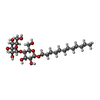
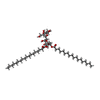

| #24: Sugar | ChemComp-LMT / #26: Sugar | ChemComp-DGD / | |
|---|
-Non-polymers , 13 types, 1213 molecules 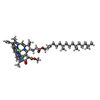
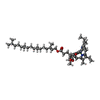
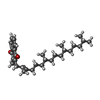
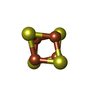
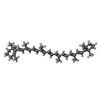
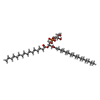

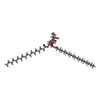
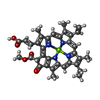
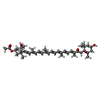











| #18: Chemical | ChemComp-CL0 / | ||||||||||||||||||||||
|---|---|---|---|---|---|---|---|---|---|---|---|---|---|---|---|---|---|---|---|---|---|---|---|
| #19: Chemical | ChemComp-CLA / #20: Chemical | #21: Chemical | #22: Chemical | ChemComp-BCR / #23: Chemical | ChemComp-LHG / #25: Chemical | ChemComp-UNL / Num. of mol.: 89 / Source method: obtained synthetically #27: Chemical | ChemComp-5X6 / | Mass: 568.871 Da / Num. of mol.: 1 / Source method: obtained synthetically / Formula: C40H56O2 #28: Chemical | ChemComp-DD6 / ( #29: Chemical | ChemComp-LMG / | #30: Chemical | ChemComp-KC1 / #31: Chemical | ChemComp-A86 / ( #32: Water | ChemComp-HOH / | |
-Details
| Has ligand of interest | N |
|---|---|
| Has protein modification | Y |
-Experimental details
-Experiment
| Experiment | Method: ELECTRON MICROSCOPY |
|---|---|
| EM experiment | Aggregation state: PARTICLE / 3D reconstruction method: single particle reconstruction |
- Sample preparation
Sample preparation
| Component | Name: PSI-FCPI / Type: COMPLEX / Entity ID: #1-#17 / Source: NATURAL | |||||||||||||||
|---|---|---|---|---|---|---|---|---|---|---|---|---|---|---|---|---|
| Molecular weight | Value: 0.55 MDa / Experimental value: NO | |||||||||||||||
| Source (natural) | Organism:  Thalassiosira pseudonana CCMP1335 (Diatom) Thalassiosira pseudonana CCMP1335 (Diatom) | |||||||||||||||
| Buffer solution | pH: 6.5 | |||||||||||||||
| Buffer component |
| |||||||||||||||
| Specimen | Conc.: 3 mg/ml / Embedding applied: NO / Shadowing applied: NO / Staining applied: NO / Vitrification applied: YES | |||||||||||||||
| Specimen support | Grid material: COPPER / Grid mesh size: 300 divisions/in. / Grid type: Quantifoil R1.2/1.3 | |||||||||||||||
| Vitrification | Instrument: FEI VITROBOT MARK IV / Cryogen name: ETHANE / Humidity: 100 % / Chamber temperature: 277 K |
- Electron microscopy imaging
Electron microscopy imaging
| Microscopy | Model: JEOL CRYO ARM 300 |
|---|---|
| Electron gun | Electron source:  FIELD EMISSION GUN / Accelerating voltage: 300 kV / Illumination mode: FLOOD BEAM FIELD EMISSION GUN / Accelerating voltage: 300 kV / Illumination mode: FLOOD BEAM |
| Electron lens | Mode: BRIGHT FIELD / Nominal magnification: 60000 X / Nominal defocus max: 1800 nm / Nominal defocus min: 1200 nm |
| Image recording | Electron dose: 50 e/Å2 / Detector mode: COUNTING / Film or detector model: GATAN K3 (6k x 4k) |
- Processing
Processing
| EM software |
| ||||||||||||||||||||||||||||||||||||||||||||
|---|---|---|---|---|---|---|---|---|---|---|---|---|---|---|---|---|---|---|---|---|---|---|---|---|---|---|---|---|---|---|---|---|---|---|---|---|---|---|---|---|---|---|---|---|---|
| CTF correction | Type: PHASE FLIPPING AND AMPLITUDE CORRECTION | ||||||||||||||||||||||||||||||||||||||||||||
| Particle selection | Num. of particles selected: 2733572 | ||||||||||||||||||||||||||||||||||||||||||||
| Symmetry | Point symmetry: C1 (asymmetric) | ||||||||||||||||||||||||||||||||||||||||||||
| 3D reconstruction | Resolution: 2.3 Å / Resolution method: FSC 0.143 CUT-OFF / Num. of particles: 75667 / Algorithm: FOURIER SPACE / Symmetry type: POINT | ||||||||||||||||||||||||||||||||||||||||||||
| Atomic model building | Protocol: FLEXIBLE FIT / Space: RECIPROCAL | ||||||||||||||||||||||||||||||||||||||||||||
| Atomic model building | Details: ModelAngelo / Source name: Other / Type: experimental model |
 Movie
Movie Controller
Controller



 PDBj
PDBj